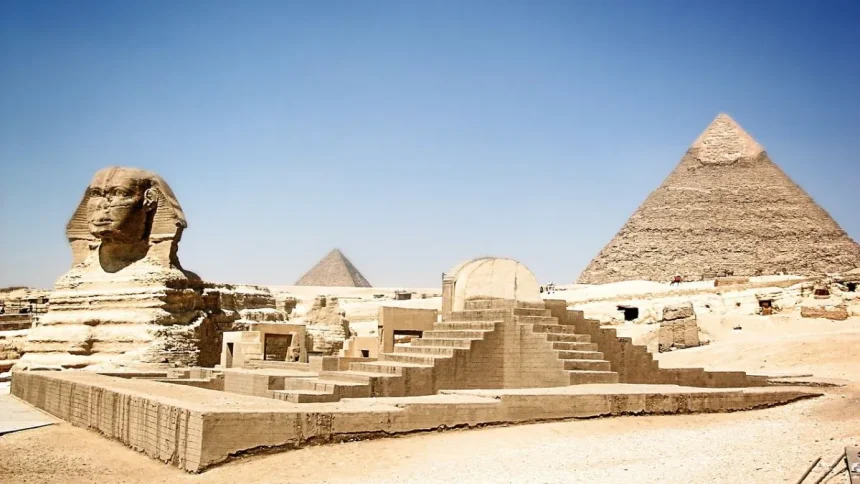Human history is rich and fascinating. Among its most interesting chapters are the stories of ancient civilizations. These early societies laid the foundation for the modern world. Their innovations and discoveries continue to influence our daily lives. Let’s explore some of these civilizations and their lasting contributions.
Mesopotamia: The Cradle of Civilization
Invention of Writing
Mesopotamia, located in present-day Iraq, is often called the “Cradle of Civilization.” This region gave birth to one of humanity’s greatest inventions: writing. The Sumerians, who lived in Mesopotamia, developed cuneiform around 3400 BCE. This early writing system involved pressing a reed stylus into clay tablets. Writing allowed for the recording of history, laws, and commerce. It made complex administration and governance possible. Our ability to document and share information today owes a lot to this ancient invention.
The First Cities
Mesopotamia was also home to the world’s first cities, like Uruk and Ur. These cities had walls, temples, and markets, showing advanced urban planning and architecture. Urbanization led to the development of social structures, trade, and culture. The concept of cities as centers of civilization began here and continues to this day.
The Code of Hammurabi
In the 18th century BCE, King Hammurabi of Babylon created one of the earliest and most complete written legal codes. The Code of Hammurabi included laws on trade, family, labor, and property, establishing justice and fairness. Legal codes form the basis of modern law. The principles of justice and equality in Hammurabi’s code still resonate in legal systems worldwide.
Ancient Egypt: Masters of Architecture and Medicine
The Pyramids
The ancient Egyptians are famous for their impressive architectural feats, especially the pyramids. The Great Pyramid of Giza, built around 2580–2560 BCE, remains one of the Seven Wonders of the Ancient World. These monumental structures demonstrate advanced knowledge of engineering and mathematics. They continue to inspire architects and engineers today.
Advances in Medicine
Egyptians were also pioneers in medicine. They practiced surgery, set broken bones, and understood the importance of cleanliness. Medical texts like the Edwin Smith Papyrus provide insight into their advanced medical knowledge. Many modern medical practices have roots in ancient Egyptian medicine. Their emphasis on cleanliness and surgical techniques laid the groundwork for future advancements.
Hieroglyphics
The Egyptians developed a complex system of writing known as hieroglyphics. This system used pictorial symbols to represent sounds and ideas. Hieroglyphics were crucial for communication and record-keeping in ancient Egypt. They also influenced other writing systems and left us valuable historical records.
The Indus Valley Civilization: Urban Planning and Craftsmanship
Advanced Urban Planning
The Indus Valley Civilization, located in present-day Pakistan and northwest India, flourished around 2500–1900 BCE. Cities like Mohenjo-Daro and Harappa featured advanced urban planning, with grid layouts, drainage systems, and standardized bricks. Their innovations in urban planning and sanitation have influenced modern city planning. The use of standardized construction materials is a practice that continues today.
Trade and Economy
The Indus Valley people were skilled traders. They traded with Mesopotamia and other regions, exchanging goods like cotton, beads, and metals. Their trade networks helped spread ideas and technologies across regions, fostering economic and cultural connections that are essential in today’s globalized world.
Craftsmanship
Artifacts from the Indus Valley show exceptional craftsmanship. They made jewelry, pottery, and tools with great skill. Their artistic and technological achievements in craftsmanship influenced subsequent cultures in the region. The tradition of fine craftsmanship continues to be valued today.
Ancient China: Innovation and Philosophy
The Great Wall and Terracotta Army
Ancient China is renowned for its impressive construction projects. The Great Wall, built to protect against invasions, and the Terracotta Army, created to guard Emperor Qin Shi Huang in the afterlife, are remarkable achievements. These structures reflect ancient China’s engineering prowess and cultural values. They attract millions of tourists each year, showcasing China’s rich history.
Inventions and Discoveries
The Chinese invented many things we use today, including paper, gunpowder, the compass, and printing. These inventions date back to as early as 105 CE for paper and the 9th century for gunpowder. These innovations have had a profound impact on global development. They revolutionized communication, exploration, and warfare, shaping the modern world.
Confucianism and Taoism
Ancient Chinese philosophy, particularly Confucianism and Taoism, has influenced many aspects of life. Confucianism focuses on ethics, family, and social harmony, while Taoism emphasizes living in harmony with nature. These philosophies continue to influence Eastern and Western thought. They promote values like respect, balance, and harmony, which are relevant in today’s society
Ancient Greece: Democracy and Philosophy
Birthplace of Democracy
Ancient Greece, particularly Athens, is known as the birthplace of democracy. Around 508 BCE, Athens developed a system where citizens could participate in decision-making. The concept of democracy has shaped many modern governments. The idea that people have a voice in their government remains a cornerstone of democratic societies.
Philosophical Contributions
Greek philosophers like Socrates, Plato, and Aristotle laid the foundation for Western philosophy. Their works cover ethics, politics, science, and metaphysics. Greek philosophy has profoundly influenced modern thought. Concepts from these philosophers are still taught and debated today.
The Olympic Games
The ancient Greeks started the Olympic Games in 776 BCE. These games were held every four years in Olympia and included various athletic competitions. The modern Olympic Games are inspired by this ancient tradition. They promote international unity and celebrate athletic excellence.
Ancient Rome: Engineering and Law
Architectural and Engineering Marvels
The Romans were master builders. They constructed roads, aqueducts, and buildings like the Colosseum and the Pantheon. Their use of concrete and the arch allowed for durable and impressive structures. Roman engineering principles are still used in modern construction. Their roads and aqueducts influenced the development of infrastructure worldwide.
Roman Law
Roman law laid the groundwork for many legal systems in the Western world. The Twelve Tables, created around 450 BCE, codified citizens’ rights and legal procedures. Principles of Roman law, such as equality before the law, have shaped modern legal systems. The idea that laws should be written and accessible to all remains fundamental.
Language and Literature
Latin, the language of Rome, became the basis for many modern languages. Roman literature, with authors like Virgil and Ovid, has also had a lasting impact. Latin influenced languages like Spanish, French, Italian, and English. Roman literature and mythology continue to be studied and appreciated.
The Maya Civilization: Astronomy and Calendar Systems
Advanced Astronomy
The Maya civilization, located in present-day Mexico and Central America, excelled in astronomy. They accurately tracked celestial movements and developed a complex calendar system. The Maya calendar and astronomical knowledge have fascinated scholars and the public alike. Their achievements in astronomy are still admired today.
Architecture and Art
The Maya built impressive structures, including pyramids, palaces, and observatories. Their art, including carvings and murals, is detailed and expressive. Maya architecture and art provide insights into their culture and beliefs. These structures attract tourists and continue to inspire artists.
Hieroglyphic Writing
The Maya developed a sophisticated writing system with hieroglyphs. They used it to record historical events, astronomy, and rituals. Maya hieroglyphs have helped historians understand their history and culture. Deciphering their writing has unlocked many secrets of this ancient civilization.
Ancient Persia: Empire Building and Administration
The Persian Empire
The Persian Empire, under leaders like Cyrus the Great and Darius, created one of the largest empires in history. They introduced efficient administrative systems and respect for local customs and religions. The Persian approach to governance and tolerance influenced future empires. Their administrative practices are considered advanced for their time.
The Royal Road
The Persians built the Royal Road, a vast network connecting their empire. This facilitated trade, communication, and military movements. The concept of an interconnected empire through infrastructure is still relevant. Modern transportation and communication systems owe much to such ancient innovations.
Zoroastrianism
Zoroastrianism, the religion of ancient Persia, introduced concepts like heaven, hell, and a final judgment. These ideas influenced later Abrahamic religions. Zoroastrianism’s teachings have had a lasting impact on religious thought. Many of its concepts are present in modern religious beliefs.
The ancient civilizations of Mesopotamia, Egypt, the Indus Valley, China, Greece, Rome, the Maya, and Persia have left indelible marks on our world. Their contributions to writing, law, architecture, philosophy, and many other fields continue to shape our lives today. By understanding and appreciating these civilizations, we can better understand the foundations of our modern society and the incredible journey of human progress.
These ancient societies were pioneers in their time, and their legacies remind us of the incredible potential for human innovation and achievement. As we build the future, we stand on the shoulders of these giants, continually inspired by their ingenuity and wisdom.







